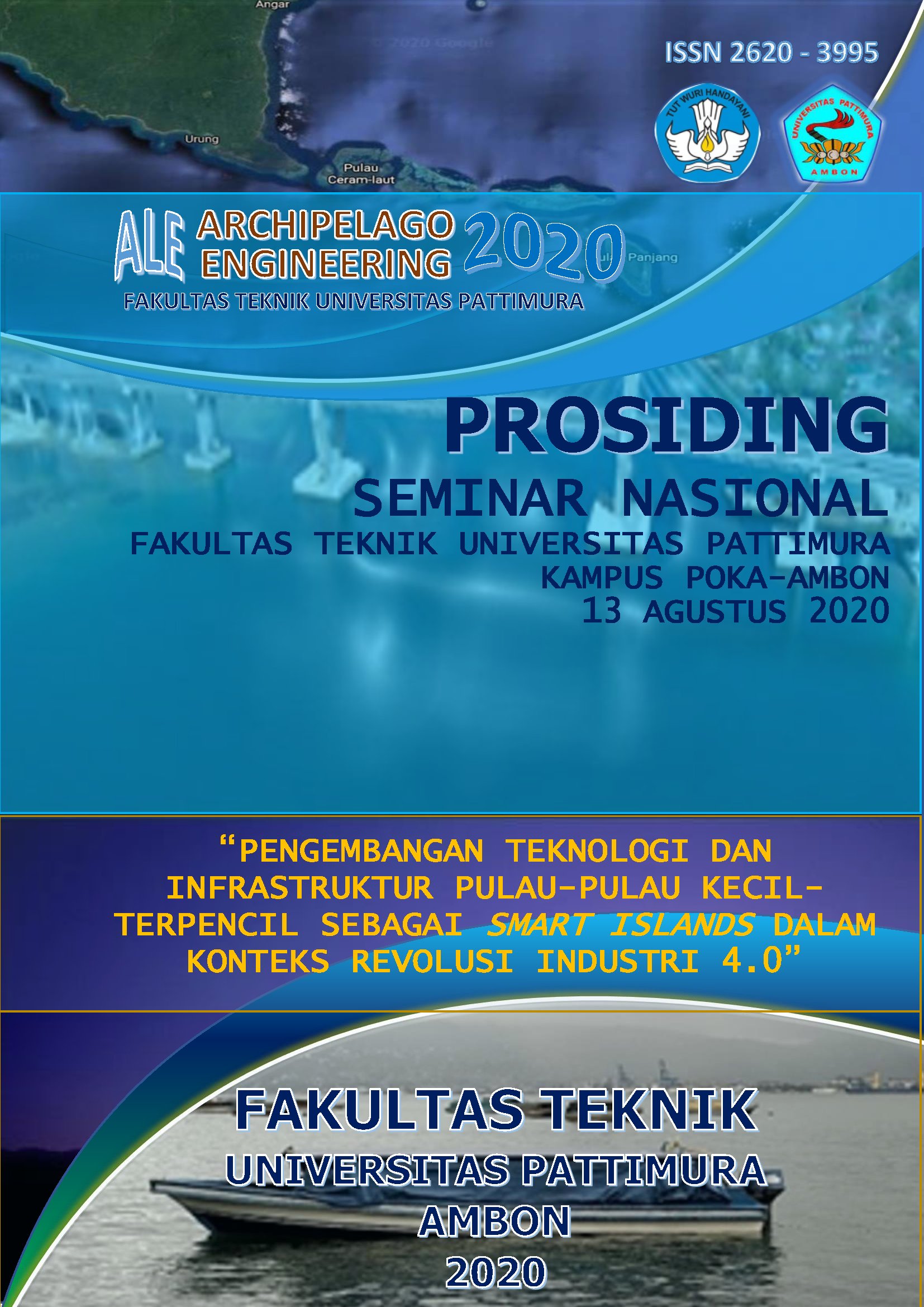ANALISIS KUALITAS PRODUK ABON IKAN DENGAN PENDEKATAN LOGIKA FUZZY
Abstract
Pertumbuhan industri abon ikan di kota Ambon memberikan pilihan baru cara mengkonsumsi ikan saat ini. Produk abon ikan yang diproduksi harus memenuhi kepuasan konsumen, agar konsumen tertarik untuk mengkonsumsinya. Kepuasan konsumen adalah persepsi konsumen bahwa harapannya telah terpenuhi atau terlampaui. Penelitian ini dilakukan untuk menganalisis kualitas abon ikan produksi lokal kota Ambon, berdasarkan uji organoleptik, yaitu berdasarkan penilaian warna, aroma, rasa dan tekstur abon yang paling disukai konsumen. Penilaian kualitas abon ikan yang dilakukan secara organoleptik bersifat linguistik, sehingga variabel dan penentuan parameter yang bersifat tidak pasti. Karena ketidakpastian variabel dan parameter yang digunakan, maka digunakan logika fuzzy. Hasil Penelitian menunjukkan bahwa konsumen lebih menyukai tekstur dan rasa abon ikan (nilai riil 4,1 dan 4,48). Kualitas abon ikan berada di antara domain Baik dan Sangat baik, dengan nilai riil 4,12.
Downloads
References
[2] S. B. Atmaja and D. Nugroho, “Upaya-upaya Pengelolaan Sumber Daya Ikan yang Berkelanjutan di Indonesia,†J. Kebijak. Perikan. Indones., vol. 3, no. 2, pp. 101–113, Feb. 2017, doi: 10.15578/jkpi.3.2.2011.101-113.
[3] M. Dzulmawan, L. Geo, and A. Gafaruddin, “Analisis Nilai Tambah Pengolahan Abon Ikan Tuna di Kelurahan Mata Kecamatan Kendari Kota Kendari (Studi Kasus Industri Rumah Tangga Dzakiyah Permata),†J. Ilm. Agribisnis, vol. 4, no. 2, p. 281397, 2019, doi: 10.33772/jia.v4i2.6511.
[4] Moh. N. Syafar and A. Lamusa, “Analisis Pendapatan Usaha Abon Ikan Tenggiri Pada Industri Rumah Tangga ‘Althaf Food’ di Kota Palu,†E-J. Agrotekbis, vol. 3, no. 2, pp. 255–260, 2015.
[5] E. Afrianto and E. Liviawaty, Pengawetan dan Pengolahan Ikan. Yogyakarta: Kanisius, 1989.
[6] E. Aryani, “Kajian pemberian asam askorbat (vitamin C) dengan konsentrasi yang berbeda terhadap ketengikan abon ikan lele (clarias batrachus),†Fish Sci., vol. 4, no. 7, Jun. 2016, doi: 10.20527/fs.v4i7.1126.
[7] T. Leksono and Syahrul, “Studi Mutu dan Penerimaan Konsumen terhadap Abon,†J. Nat. Indones., vol. 3, no. 2, pp. 178– 184, 2001.
[8] D. Fishken, “Sensory Quality and the Consumer: Viewpoints and Directions,†J. Sens. Stud., vol. 5, no. 3, pp. 203–209, 1990, doi: 10.1111/j.1745-459X.1990.tb00490.x.
[9] E. Hasrati and R. Rusnawati, “Kajian Penggunaan Daging Ikan Mas (Cyprinus Carpio Linn) terhadap Tekstur dan Cita Rasa
Seminar Nasional “ARCHIPELAGO ENGINEERING†13 Agustus 2020 ISSN: 2620-3995
Prosiding ALE 3, 2020 Fakultas Teknik Universitas Pattimura - Ambon | 30
Bakso Daging Sapi,†Agromedia, vol. 29, no. 1, Mar. 2011, Accessed: Apr. 06, 2019. [Online].
[10] S. T. Miratis, T. D. Sulistiyati, and H. E. Suprayitno, “Pengaruh Suhu Pengukusan terhadap Kandungan Gizi dan Organoleptik Abon Ikan Gabus (Ophiocephalus striatus),†J. Mhs. Teknol. Has. Perikan., vol. 1, no. 1, pp. 33-45–45, May 2013.
[11] M. Jedlickova and P. Kutnar, “Construction of a Fuzzy Model for the Success Prediction of Hi-Tech Companies With a Short History,†in 17th International Scientific Conference at Brno University of Technology, Faculty of Business and Management, Brno, Czech Republic, Apr. 2019, vol. 0, Accessed: Apr. 14, 2019. [Online]. Available: https://conference.fbm.vutbr.cz/ic/index.php/ic/article/view/36.
[12] Waysima and D. Adawiyah R., Evaluasi Sensori, 5th ed. Bogor: Fakultas Teknologi Pertanian Institut Pertanian Bogor, 2001.
[13] R. Heale and A. Twycross, “Validity and reliability in quantitative studies,†Evid. Based Nurs., vol. 18, no. 3, pp. 66–67, Jul. 2015, doi: 10.1136/eb-2015-102129.
[14] P. Vonglao, “Application of fuzzy logic to improve the Likert scale to measure latent variables,†Kasetsart J. Soc. Sci., vol. 38, no. 3, pp. 337–344, Sep. 2017, doi: 10.1016/j.kjss.2017.01.002.
An author who publishes in the ALE Proceeding agrees to the following terms:
- Author retains the copyright and grants ALE Proceeding the right of first publication of the work simultaneously licensed under the Creative Commons Attribution-ShareAlike 4.0 License that allows others to share the work with an acknowledgment of the work's authorship and initial publication in this journal.
- Author is able to enter into separate, additional contractual arrangements for the non-exclusive distribution of the journal's published version of the work (e.g., post it to an institutional repository or publish it in a book) with the acknowledgment of its initial publication in this journal.
- Author is permitted and encouraged to post his/her work online (e.g., in institutional repositories or on their website) prior to and during the submission process, as it can lead to productive exchanges, as well as earlier and greater citation of the published work (See The Effect of Open Access).
Read more about the Creative Commons Attribution-ShareAlike 4.0 Licence here: https://creativecommons.org/licenses/by-sa/4.0/.






